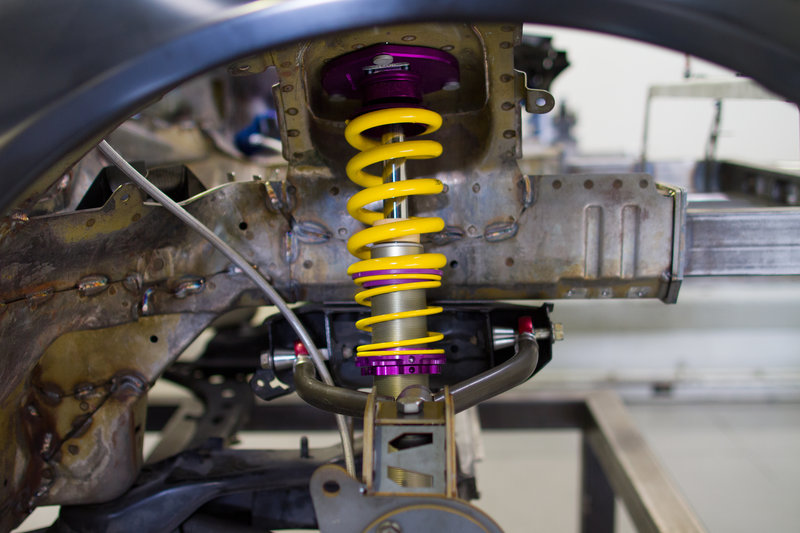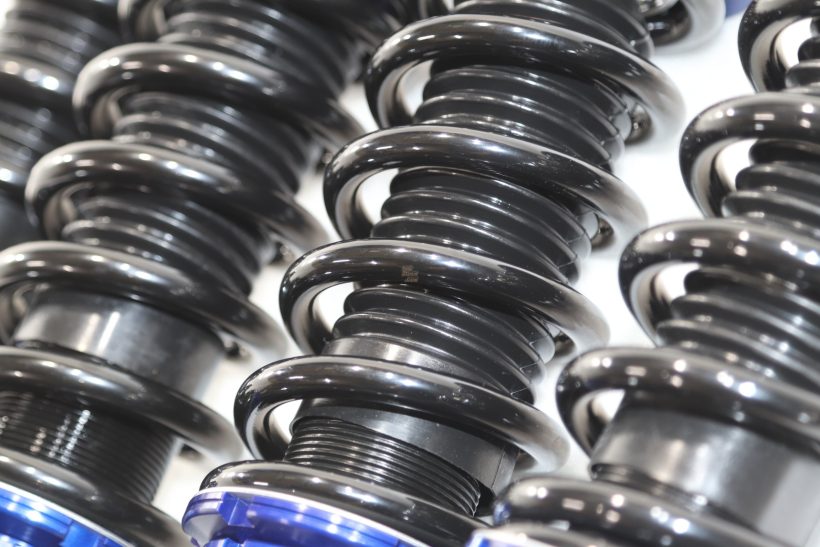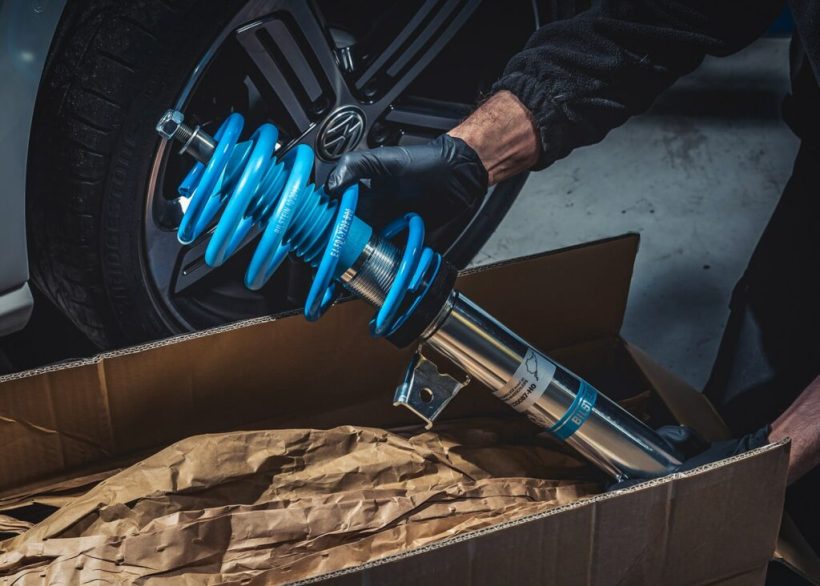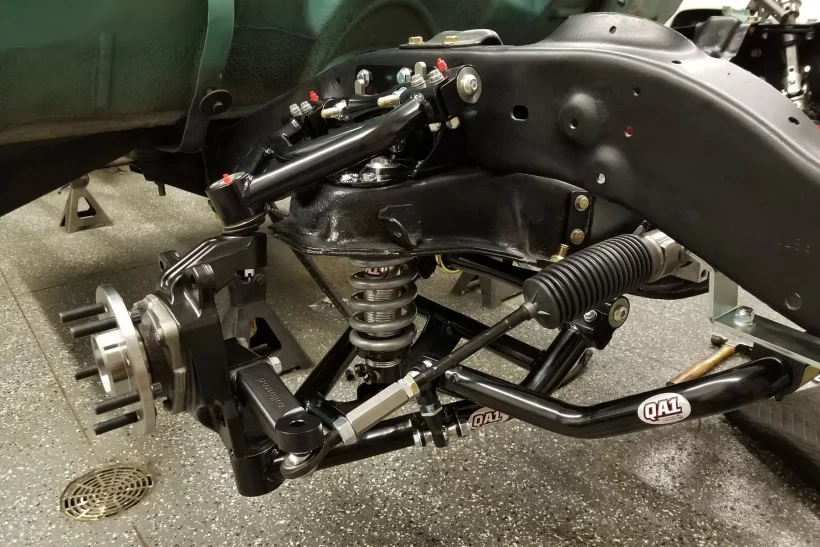We typically appreciate smooth, comfortable, and vibration-free journeys whenever we drive a car. Furthermore, we prefer a car with excellent driving control and dynamic stability to any other vehicle. All of the above are influenced by the vehicle’s suspension system, either directly or indirectly. In every essential way, a vehicle with soft and smooth suspension outperforms other vehicles.
The suspension system connects an automobile to its wheels through a series of linkages, shock absorbers, and springs. Suspension systems come in a variety of configurations, but the coilover suspension system is the most popular. The phrase “Coil Spring Over Shock Absorber” is abbreviated as “Coilover.” In this guide, you will learn about the pros and cons of coilovers. You can also learn about how you can get the most out of coilovers by checking out the Damntool guide.
What Are Coilovers?

This is a suspension component that incorporates both a coil spring and a shock absorber into one unit. Due to their adjustability and handling benefits, they are a popular modification. They can increase the stability and performance of off-roaders, race cars, and even everyday driving.
Functions of Coilovers
Coilovers are not standard equipment on most automobiles. Instead, a coil spring is used, followed by a shock absorber (a strut or shock, depending on the vehicle and the axle). The coil spring bounces when you hit a bump, and the shock dampener absorbs the shock, giving you a more comfortable ride. This is how it works:
Because a Coilover acts as both a coil spring and a shock dampener, it must perform both functions. They complement each other nicely because both jobs are accomplished in one piece.
Pros of Coilovers

Adjustable height
With these suspension systems, we can easily alter the height of our vehicle. A rider who prefers a low ride can easily modify the ride’s height. Coilovers can also be locked at a higher level for off-road driving.
Vibrations are well dampened
We are all familiar with feeling frustrated and uncomfortable while driving a vehicle across uneven surfaces and roads. With coilovers, however, this is not the case. The springs and dampers in this kind of car work together to absorb and reduce the shocks, which makes the ride smooth and even.
Excellent handling
Rides are smoother with these suspension systems, and the driver is more relaxed and enjoys the ride. The alignment of the wheels stays the same while it is being used. This makes it easier for the driver to drive the car.
Cons of Coilovers
Unexpected issues
To save money, some people use low-quality coilovers, which can fail in the middle of a ride, inflicting significant damage to a vehicle. Risking one’s life to save money is a bad idea. Therefore, only invest in high-quality systems with good yield strength and long-term durability.
Riding may be tough
When using coilovers, some drivers have complained about a stiff ride. That’s not always the case, though. Most often, this happens when low-quality springs are used and the system isn’t properly aligned.
High cost
Coilovers are significantly more expensive than comparable suspension systems on the market right now. But, on the other hand, can be changed with a variety of suspension systems that are made for your car.
They take up a lot of room
The fundamental difficulty with coilovers is that they take up too much room in the assembly, resulting in a variety of problems. It frequently collides with other components such as cables, brakes, and even sidewall chewing.
Are coilovers necessary?

No, in most cases. Unless you want your car to perform in ways it can’t right now, they aren’t necessary. Most of the time, they are more expensive than conventional springs, and cheap ones are weak and, in the long run, will be worse than the factory-installed, warrantied spring and shock setup.
Coilover suspension is used in cars to improve performance by lowering the ride height and reducing body roll. This results in better traction, more effective handling, and less drag because the car’s mass isn’t wobbling around. They can also be tweaked to help a car squat when accelerating, which enhances traction temporarily in rear-wheel-drive vehicles. Off-road vehicles can use adjustable coilovers to adapt to the terrain.
How to Choose a Coilover System: Which Type of This System Is Best for You?

This article will help you choose the best system for your vehicle. They are the best option for vehicles that have a lot of suspension travel, like trucks and SUVs. They can be installed on just about any vehicle, from cars to motorcycles.
With the advancement in technology, these systems have become a popular choice for vehicle suspension systems. There are two types of coilover systems that you can choose from: air or hydraulic.
Air-adjustable ones are ideal for those who want to adjust their vehicle’s height and ride height with the use of an air compressor. They are also convenient because they don’t require any external power source. The downside is that they are not as effective as adjustable shock absorbers and do not offer the same comfort level. Manual-adjustable shocks allow drivers to raise their vehicle to a higher or lower height. They work by using a piston attached to pistons that contain different fluids than those in shock absorbers.
Hydraulic-adjustable coilovers, on the other hand, need external power sources to remain functional. They also come with more features like remote reservoirs and adjustable ride height and damping rates. Pneumatic or hydraulic adjustable ones are capable of providing the rider with significantly different handling and ride quality depending on how they are set. Hydraulic-adjustable coilovers provide a unique, smooth ride quality that isn’t found in most other types of suspension systems. Pneumatic-adjustable ones, on the other hand, can provide a firmer ride and are easier to adjust.
Wrapping Up
Coilovers are suspension systems that employ a matched damper and coil spring. This system is fairly costly, but because of its exceptional capabilities, it delivers a better driving experience for the user. This technology allows for superior steering handling, wheel alignment, and shock absorption. It gives you a comfortable ride, exceeding the market’s competitors.

